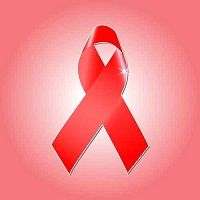Article
HIV Risk to Babies No Worse with Maternal Herpes Infection
Author(s):
Pregnant women who have both herpes simplex and HIV showed no increased risk for spreading HIV to their babies, a Ukraine study found.

A recent study reveals a bit of good news for women with HIV and herpes simplex virus (HSV). A study of women in Ukraine found there is no increased risk of mother-to-child transmission (MTCT) of HIV due to the co-infection.
The study was completed by Karoline Aebi-Popp of the Division of Infectious Diseases at University Hospital Bern, in Switzerland, and colleagues, and was published in the journal BMC Pregnancy and Childbirth on April 27, 2016.
The researchers say they set out to explore “factors associated with HSV-2 seropositivity among HIV-positive women in Ukraine, and its impact on HIV MTCT.
In order to learn more, they collected data from 1513 women with HIV who were enrolled in the Ukraine European Collaborative Study between 2007 and 2012.
Inclusion criteria were that the women had to have been diagnosed with HIV before or during pregnancy, or intrapartum, and they had to have delivered a live infant. The women self-reported information about lifestyle, including drug use, use of contraception.
The median age of the participants was 27 years, 88% were married or cohabitating, approximately half were giving birth to their first child, and 53% were diagnosed as HIV positive during their most recent pregnancy.
The researchers report, “HSV-2 seroprevalence was 68%, the HSV-2 antibody test was conducted during pregnancy, for 6% prior to conception and 7% after delivery.” Older women and those who had previously terminated pregnancies were more likely to be positive for HSV-2 serostatus.
The researchers also say, “Infants of HSV-2 seropositive mothers were more likely to be delivered vaginally and to be of low birthweight than other infants.” At the time this study was conducted, all of the infants were at least 2 years old, and there were HIV test results for 89% of those born to seropositive women, and 88% for those born to seronegative women. The overall HIV MTCT rate was 2.8% and the researchers say, “There was no evidence that HSV-2 seropositivity was associated with HIV MTCT risk in unadjusted analyses.”
The results of this study are in conflict with previous results, however, the previous studies were “all conducted more than 10 years ago in populations with much higher background rates of HIV MTCT,” according to the researchers.
The researchers add that their sample size is too small to rule out smaller increases in HIV MTCT risk. They conclude that they found “a high prevalence of HSV-2 antibodies but no associated increased risk of vertical HIV transmission, in this population with an overall HIV MTCT rate of 2.8%.”





